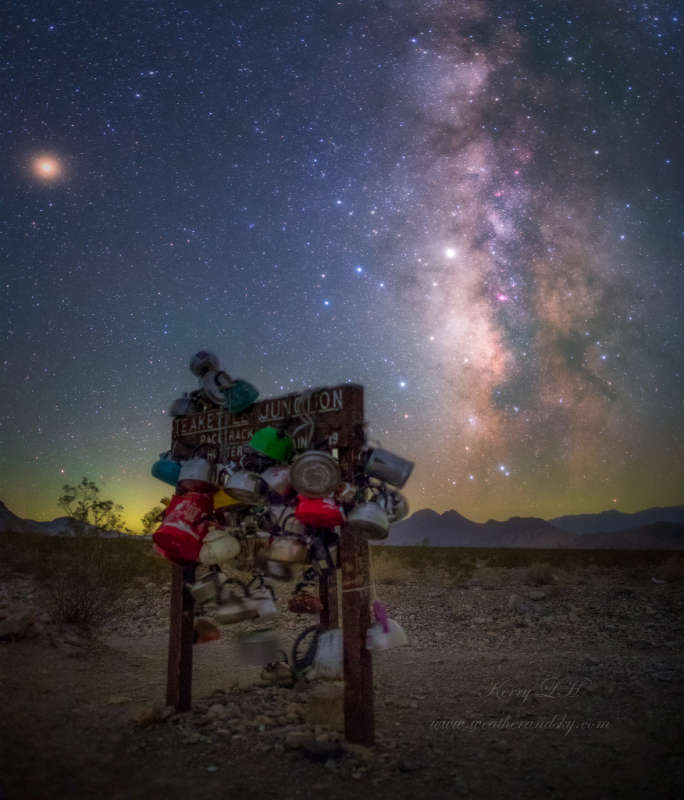
|
Credit & Copyright: Kerry-Ann
Lecky Hepburn
(Weather and Sky
Photography)
Explanation:
The recognizable stars
of the Teapot asterism in the constellation
Sagittarius posed with the Milky Way over Death Valley, planet Earth
on this quiet, dark night.
The surreal scene was appropriately captured from
Teakettle Junction,
marked by the wooden sign adorned with
terrestrial teapots and kettles on the rugged road to
Racetrack Playa.
Shining against the luminous starlight of the central Milky Way
is bright planet
Saturn,
just above the star at the
celestial teapot's peak.
But the brightest celestial beacon, high above the southern horizon, is
an orange tinted
Mars at upper left
in the frame.
|
January February March April May June July August September October November December |
| |||||||||||||||||||||||||||||||||||||||||||||||||||||||
NASA Web Site Statements, Warnings, and Disclaimers
NASA Official: Jay Norris. Specific rights apply.
A service of: LHEA at NASA / GSFC
& Michigan Tech. U.
Based on Astronomy Picture
Of the Day
